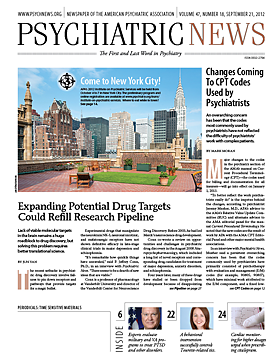In the first five months of this year, 11 young people completed suicide in Kent and Sussex counties in Delaware, an increase from the yearly average of four in those aged 12 to 21 from 2009 to 2011.
Reflecting the state’s concern about this troubling development, the Delaware Department of Health and Human Services asked the federal Centers for Disease Control and Prevention (CDC) to conduct an epidemiological study to determine the rates of fatal and nonfatal suicide behaviors in the area, analyze risk factors, and recommend strategies to prevent future suicides.
Of the 11 decedents, four were students at the same high school, two were students at other local high schools, one was a student at a middle school, one had dropped out of high school, two had graduated from area high schools and were still living in Sussex County, and one was an adult with unknown education history.
Katherine Fowler, Ph.D., an epidemic intelligence service officer with the Division of Violence Prevention in the CDC’s National Center for Injury Prevention and Control, collected data from law-enforcement, hospital, suicide hotline, and medical-examiner records to determine both fatal and nonfatal suicidal behavior among youth within the local area.
Fowler also conducted four individual interviews and three group interviews with local school faculty members to gauge awareness of the problem, determine the awareness of mental health resources in the community, and ask participants what they thought was contributing to the increase in suicide deaths.
From these interviews, Fowler was able to identify barriers to suicide prevention and resource access. These barriers included limited extracurricular activities for youth, too few mental health resources, lack of transportation to mental health appointments, an absence of community education about suicide prevention, and “inappropriate access to firearms.”
The researchers found that the most common means of suicide death were hanging, followed by self-inflicted gunshot wound, consistent with national statistics on suicides in this age group.
Interviews with the selected school faculty also garnered opinions on the effect of bullying and social media on youth in the community. Although several of those interviewed disagreed with the hypothesis that bullying was a major factor in the suicides, local media implied that bullying was the cause of the first decedent’s suicide. Those who were interviewed also voiced concern that social media fueled the spread of false rumors about the suicides, said Fowler.
After analyzing the information about this suicide cluster, Fowler identified common circumstances that may have contributed to the deaths. These circumstances included mental health problems (n=7); recent problem between the decedent and his or her parents (n=5); recent legal problems (n=5); problems with a boyfriend or girlfriend (n=4); substance use (n=4); academic problems (n=3); left a note, called someone, or texted about suicide (n=3); recent problems with peers (n=2); or the decedent was a sexual minority (n=2).
“Youth who commit or attempt suicide typically have multiple risk factors for suicide before an attempt is made. A precipitating event then often triggers the attempt in an already vulnerable person,” wrote Fowler, “Therefore, it is possible to detect risk factors for suicide in youth and prevent suicidal behavior in vulnerable young persons.”
Of the 11 suicides, each one had at least two of these circumstances, and over half had five or more. These findings prompted the CDC to recommend periodic mental health training for people in youth-serving organizations, creation of community partnerships between faith-based and community-based organizations, and strategies to review evidence-based suicide prevention strategies for youth.
The CDC’s report on the Delaware suicides also urged implementation of its 1994 guidelines for media reporting on suicides and for public officials who discuss suicide deaths with the media, which were developed in an effort to prevent “suicide contagion.” (The guidelines are posted at
www.cdc.gov/mmwr/preview/mmwrhtml/00031539.htm.)
Although risk factors were identified and evaluated, Fowler acknowledged limitations with her group’s report. For example, the researchers did not speak with students or other young people in the community, which could have uncovered different impressions about suicide and how to prevent it. They also were unable to thoroughly investigate social-media interactions between students, which could have provided more information about possible risk factors.
Fowler also suggested misclassification of suicidal behavior as a limitation. “There are cases that may have been missed during this investigation (e.g., single-occupant motor vehicle accidents, poisonings, or other injuries that appear to be accidents),” she noted.

